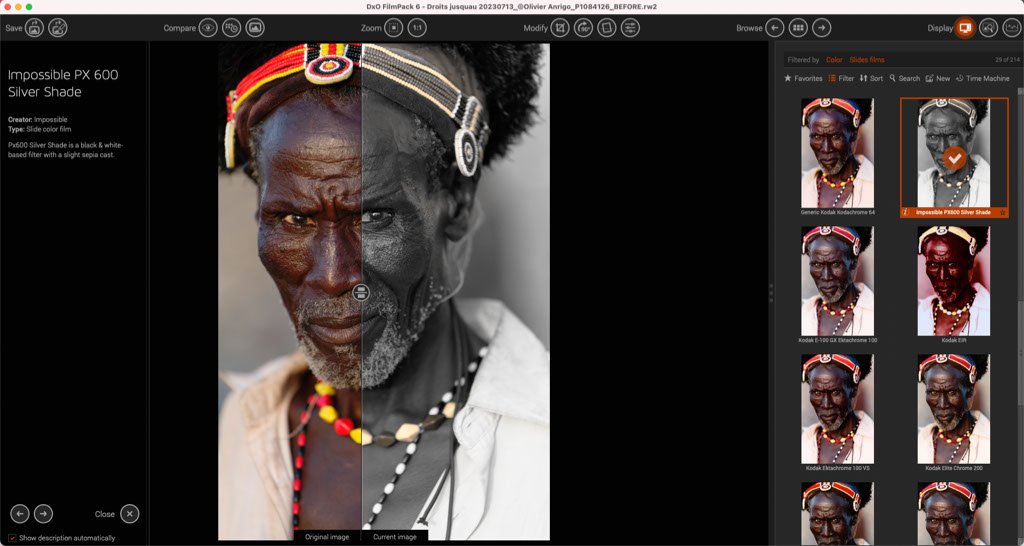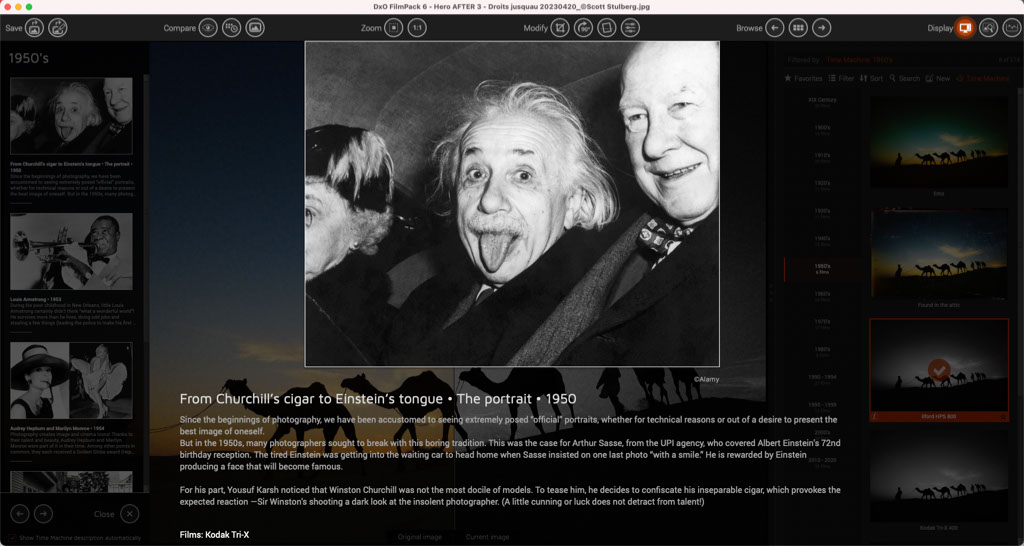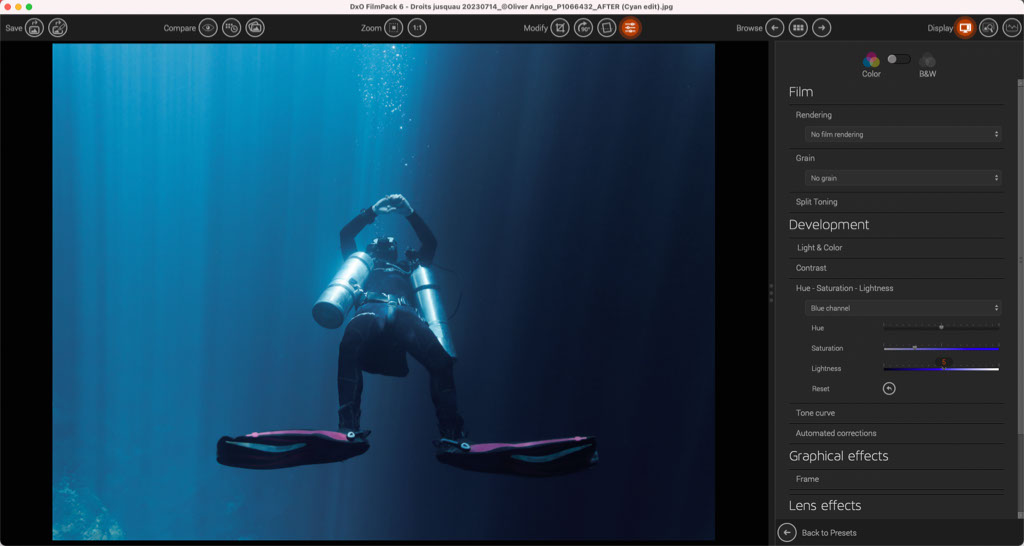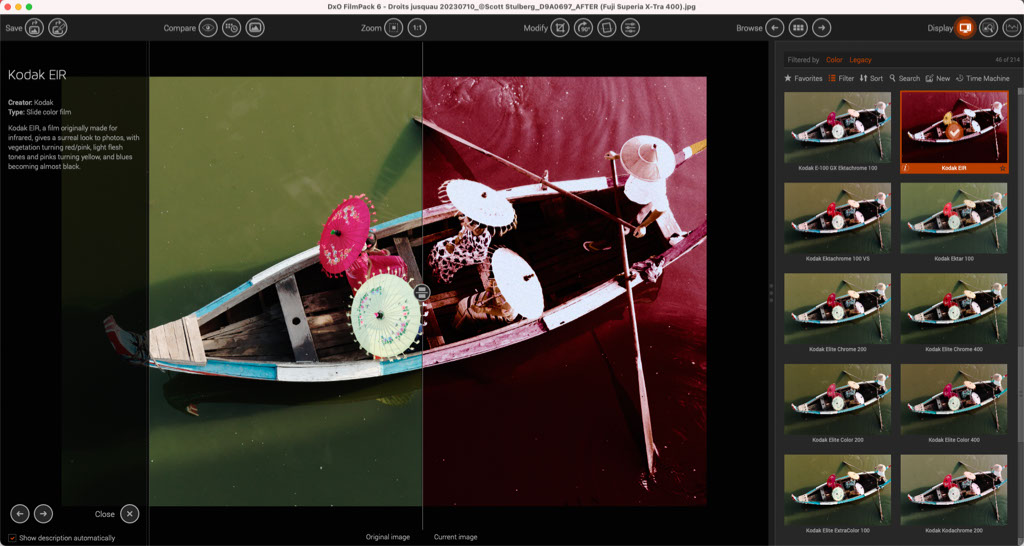DxO FilmPack 6 recaptures the analog film looks of bygone eras
DxO FilmPack fans have had to wait since 2015 for an update. But now it’s here, what has DxO’s latest analog tool got to offer?

At the same time as its launch of DxO PhotoLab 5, DxO has released a long-awaited update to its analog film simulator, DxO FilmPack. FilmPack 6 brings new films, new effects, new light leaks and new frames – and like PhotoLab 5, it now brings support for Fujifilm X-Trans cameras.
FilmPack 6 shows another side to DxO’s digital expertise. Where its flagship program, DxO PhotoLab, aims to deliver pixel-perfect processing and lens corrections to digital images, FilmPack 6 celebrates the evocative imperfections, unpredictability and nostalgia of classic analog films and processes.
FilmPack 6 can be used as a standalone program but once it’s installed, many of its key features are also integrated into DxO PhotoLab, where you can apply classic film looks at the same time as the latest digital corrections.
DxO also publishes the Nik Collection, of course, so there is some crossover between FilmPack 5 and, especially, Silver Efex Pro and Analog Efex Pro, but FilmPack 6 takes a more scientific approach whereas the Nik plug-ins are arguably more experimental.

DxO FilmPack 6 new features
DxO says FilmPack 6 accurately renders “the soul of analog photography”. Using the same laboratory analysis applied to its raw processing and lens correction tools, with FilmPack 6 DxO aims to reproduce the grain and colors of legendary analog films.
Now offering a total of 84 analog film looks, including iconic films like Kodak Tri-X 400, Ilford HP5, Fujifilm Superia and Polaroid 690, DxO has added 15 new films such as Ektachrome Professional Infrared EIR color slide film and Impossible PX 600 Silver Shade black and white for Polaroid 600 cameras, together with 7 film simulation modes from X-series Fujifilm cameras, to mark its new-found support for Fujifilm cameras.
As with DxO PhotoLab 5, this X-Trans support is still in ‘beta’. It works right now, but its final features are still under development.
Get the Digital Camera World Newsletter
The best camera deals, reviews, product advice, and unmissable photography news, direct to your inbox!

On the technical side, FilmPack 6 now offers 8-channel hue, saturation and lightness (HSL) adjustments rather than the previous 6, for more precise color adjustments, in addition to the software’s split toning tools and highlight/shadow hue adjustment.
Perhaps the software’s most striking feature, however, is its new Time Machine mode, in collaboration with the Friends of the French Museum of Photography in Bievres, and which DxO describes as a unique and interactive introduction to the history of film photography. Separated into 14 historical periods, it offers both an illustrated history of photography, with sample images and insights into the developments of the time, plus suggestions and presets for creating the same looks with your own images.

FilmPack 6 pricing and availability
DxO FilmPack 6 is available in both Essential and Elite editions, and with special upgrade pricing for existing users. Prices are also discounted up until November 14.
FilmPack 6 Essential will cost $85/£75 normally, or $54.99/£48.99 with discount. The upgrade price from FilmPack 5 Essential will be $55/£49, or $39.99/£35.99 with discount.
FilmPack 6 Elite will cost $139/£129, or $109.99/£99.99 with discount, with an upgrade price from FilmPack 5 Elite of $79/£69, or $59.99/£44.99 with discount.
A full 30-day trial version is available.

Rod is an independent photography journalist and editor, and a long-standing Digital Camera World contributor, having previously worked as DCW's Group Reviews editor. Before that he has been technique editor on N-Photo, Head of Testing for the photography division and Camera Channel editor on TechRadar, as well as contributing to many other publications. He has been writing about photography technique, photo editing and digital cameras since they first appeared, and before that began his career writing about film photography. He has used and reviewed practically every interchangeable lens camera launched in the past 20 years, from entry-level DSLRs to medium format cameras, together with lenses, tripods, gimbals, light meters, camera bags and more. Rod has his own camera gear blog at fotovolo.com but also writes about photo-editing applications and techniques at lifeafterphotoshop.com
